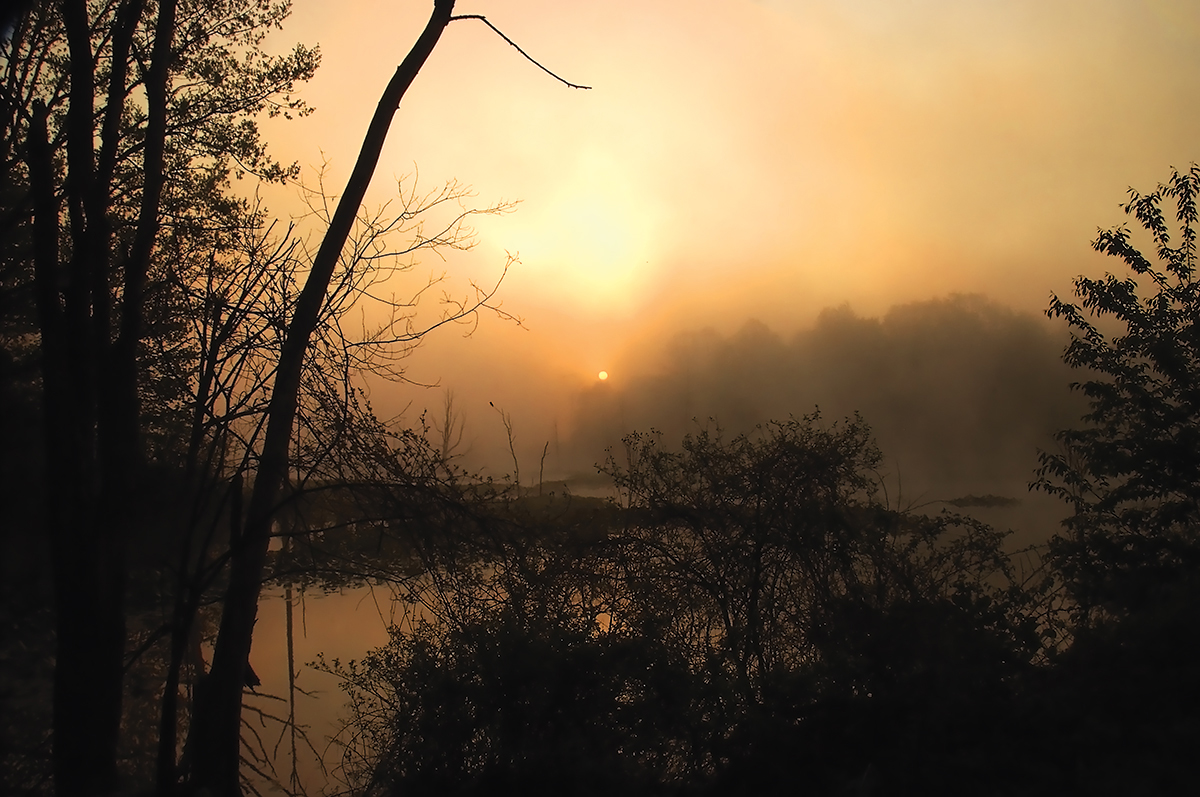
“In Praise of a Rising Sun”
Shortly after 4:30 a.m., 15 years ago tomorrow morning, I arrived at Schweitzer marsh to “bear witness” to another sunrise. At the time I calculated I’d seen 200 or more sunrises and perhaps only a score of sunsets over the 60 years that I’d visited the marsh. Each was remarkable for its singular beauty and each has added immeasurably to my reverence for existence.
For all its dramatic color at the end of day the setting sun, our animating star, goes mostly unnoticed as it transits the sky; a quotidian fixture languishing above until its abrupt conclusion, sliding silently away, fire and birdsong disappearing with it into night. For me, the setting sun tinges of resignation, even the mystery of death, an epilogue to the long day … to life – possessing a secular sameness, almost an afterthought in contrast to the numinosity of the rising sun.
Looking east across the marsh, this indelible morning began in the dark of night as I picked my way along the west bank through buttonbush, rush and reed to its northern corner. The path, if not particularly worn, was well known to me as I’ve travelled it frequently, often in a soporific state I confess. The water’s surface, mere feet beyond the bank, spread imperceptibly east, not yet visible. Shortly after 5:00 a.m. its surface or possibly its illusion appeared though it was not until hearing the “check, check” call of a red winged blackbird that I knew with certainty twilight had begun – the true magic when trees and brush and wildlife slowly take form. After another 30 minutes the Canada geese joined the red winged blackbirds and spring peepers as the marsh came to life beneath the colorless, opaque sky.
Beyond and above daybreak’s dissonant shrill, as the sun pierced the horizon, came the sublime, terrifying croak of a Great Blue Heron proclaiming itself in the new day. In that moment, the morning fire, an effulgent blaze of red and orange, terror and wonder, swept the landscape. Who has witnessed such moments and emerged unchanged?
So I leave you with one of my favorite images. After the sun rose that morning and the chorus of birds and peepers fell silent, a lone redwing blackbird perched atop a long dead pin oak, announced his existence and joy for the new day.
In many ways this is my elegy to Schweitzer Marsh, especially for those of you who have followed and assisted in preserving this small, remote wilderness. The Wheeling & Lake Erie railroad effectively drained the wetland over a year ago and can not be persuaded by law or through conservation to reverse their actions.
Autumn and spring migrations have ceased, the red winged blackbirds have moved on and only a small rivulet runs tortuously over fields of dead sedge. As John Keats lamented in his famous ballad, “La Belle Dame sans Merci,” just over 200 years ago, “The sedge has withered … and no birds sing.”




 “The Sun is but a Morning Star” H.D. Thoreau
“The Sun is but a Morning Star” H.D. Thoreau


